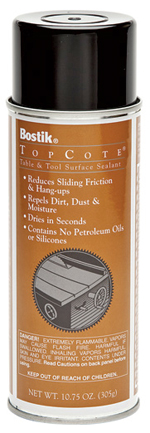
I recently purchased a 3hp Grizzly cabinet table saw with a cast-iron top for my summer stock’s scenery shop. We used it avidly during the season, but now it will see no use until the shop reopens next April. What are the best measures to take to see that it survives the winter? It’s being stored, currently, in an uninsulated, fairly leaky (though not near the saw) warehouse-like building. Also, what should I do at the start of the next season to prepare it for really heavy use? – Patrick McGovern
Chris Marshall: Damp air will be your saw’s biggest enemy this winter during its “hibernation” period. First, I would thoroughly clean the machine with a shop vac and compressed air to remove all the sawdust and buildup that could become damp and accelerate corrosion. Then, I would coat all of the saw’s bare, unpainted metal with a protective spray such as Bostik® Top-Cote or Boeshield T-9® to keep the metal from rusting. Cover the tool with a waterproof tarp or tool cover. Check on it every now and then through the winter, if you can, to make sure there aren’t signs of rust developing. If you find any, remove it and apply some more metal protectant. Come spring, lubricate the worm drive gears, and give the table top a thorough cleaning followed by a coat of wax or a dry lube. Tune up the machine’s blade tilt stops and rip fence parallelism, if needed, or at least double-check the accuracy of these settings. You should be all set for another season of use. If the saw were going to be stored for more than just a winter, I would take the tension off of the arbor drive belts, but I think that’s overkill for your storage situation here.
Tim Inman: Cosmolene. That cold cast iron will cause moisture to condense on the surfaces you want to keep bright. To prevent bad things from happening, I’d take every precaution. Coat the surfaces with wax, then maybe even follow that up with some petroleum jelly, or grease. Get some silica gel crystals (available at hobby shops — used to dry flowers, etc.) and put an open dish of them on the table to dry the air. Wrap the whole saw in plastic, and secure it. We’re trying to keep wet air from moving over the table, and condensing into moisture. Better plan: move the saw into better digs for the winter. What to do next spring? Reverse these steps. End up with a highly polished wax surface on your saw, and get to work. Promise yourself that next fall, you’ll do better.






